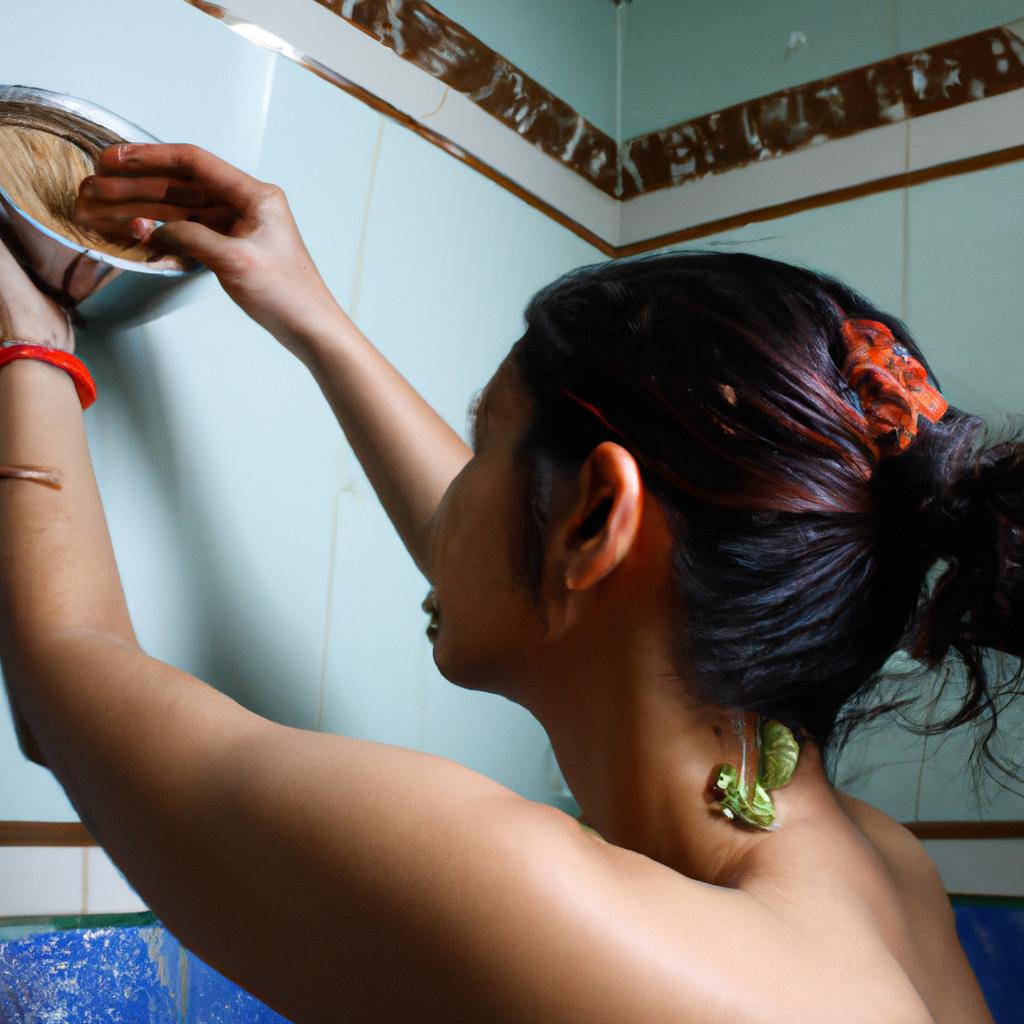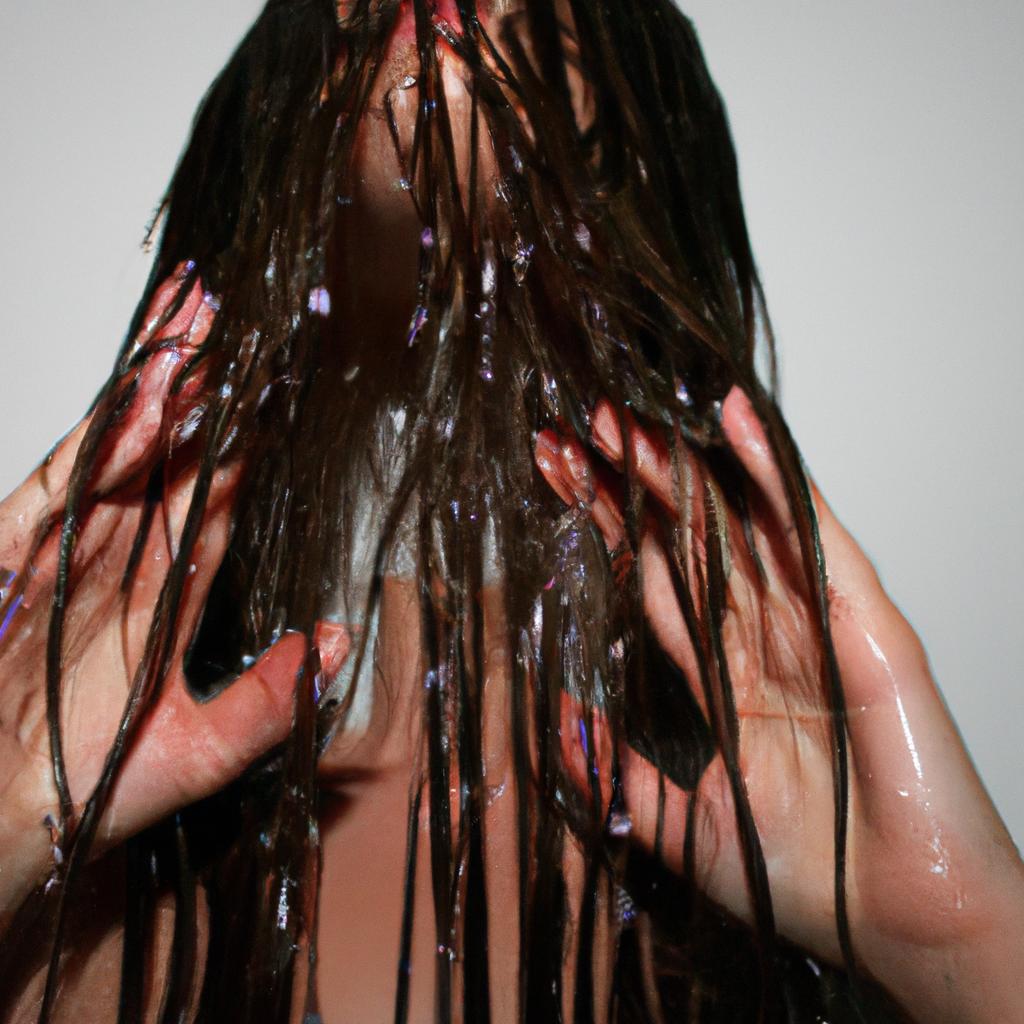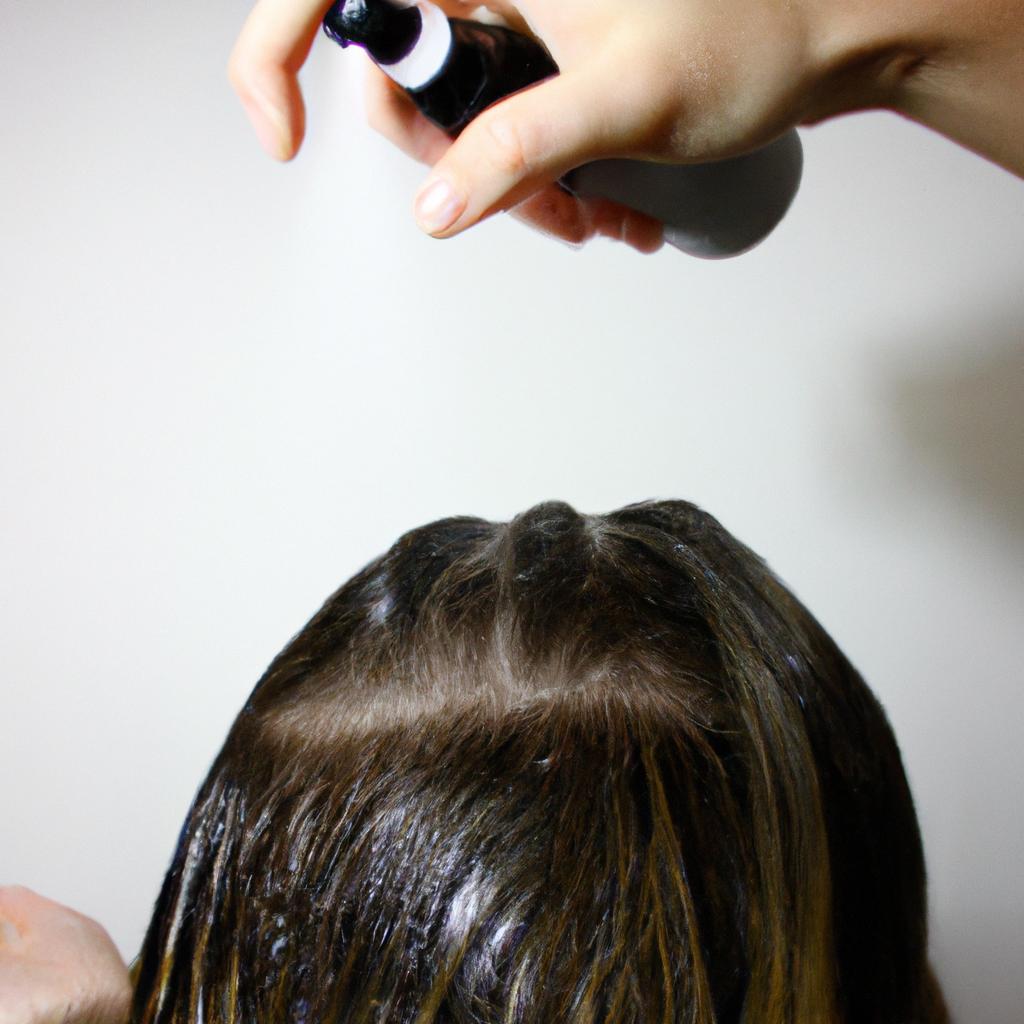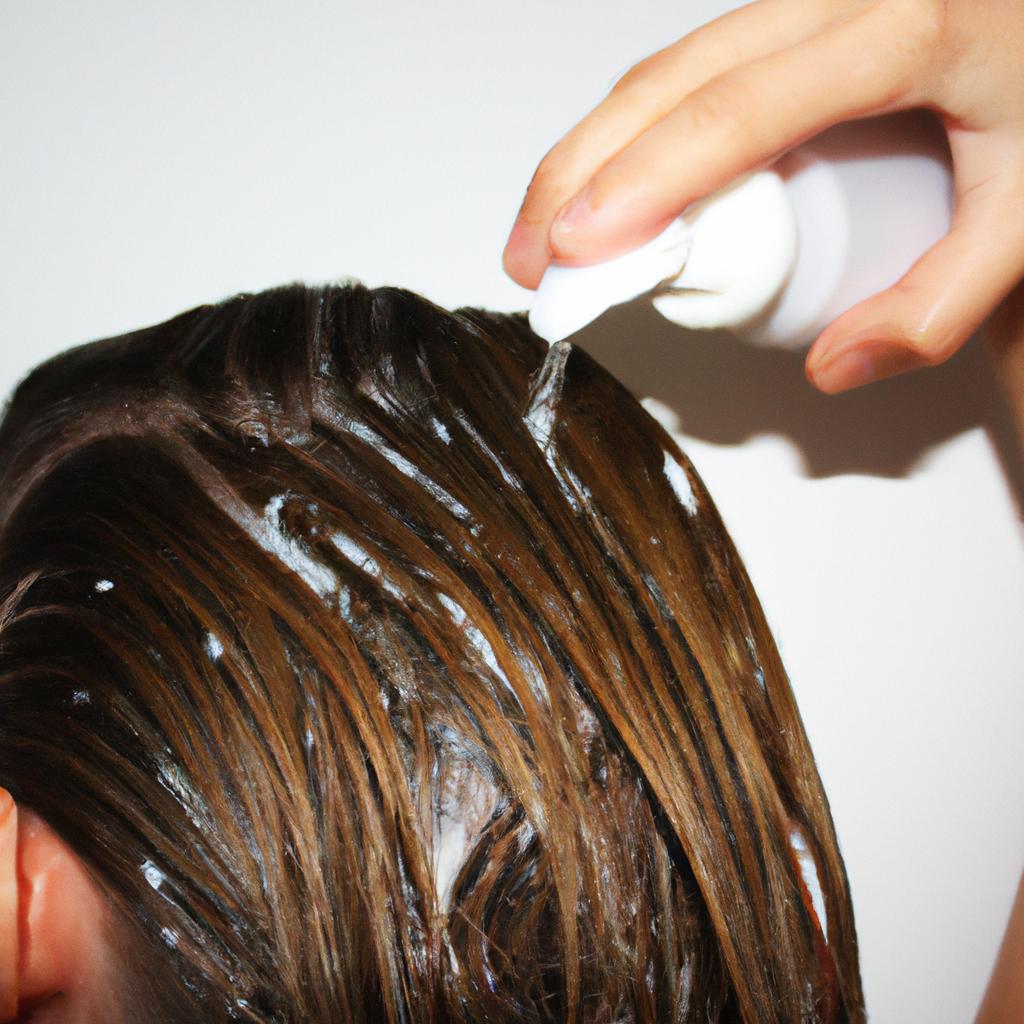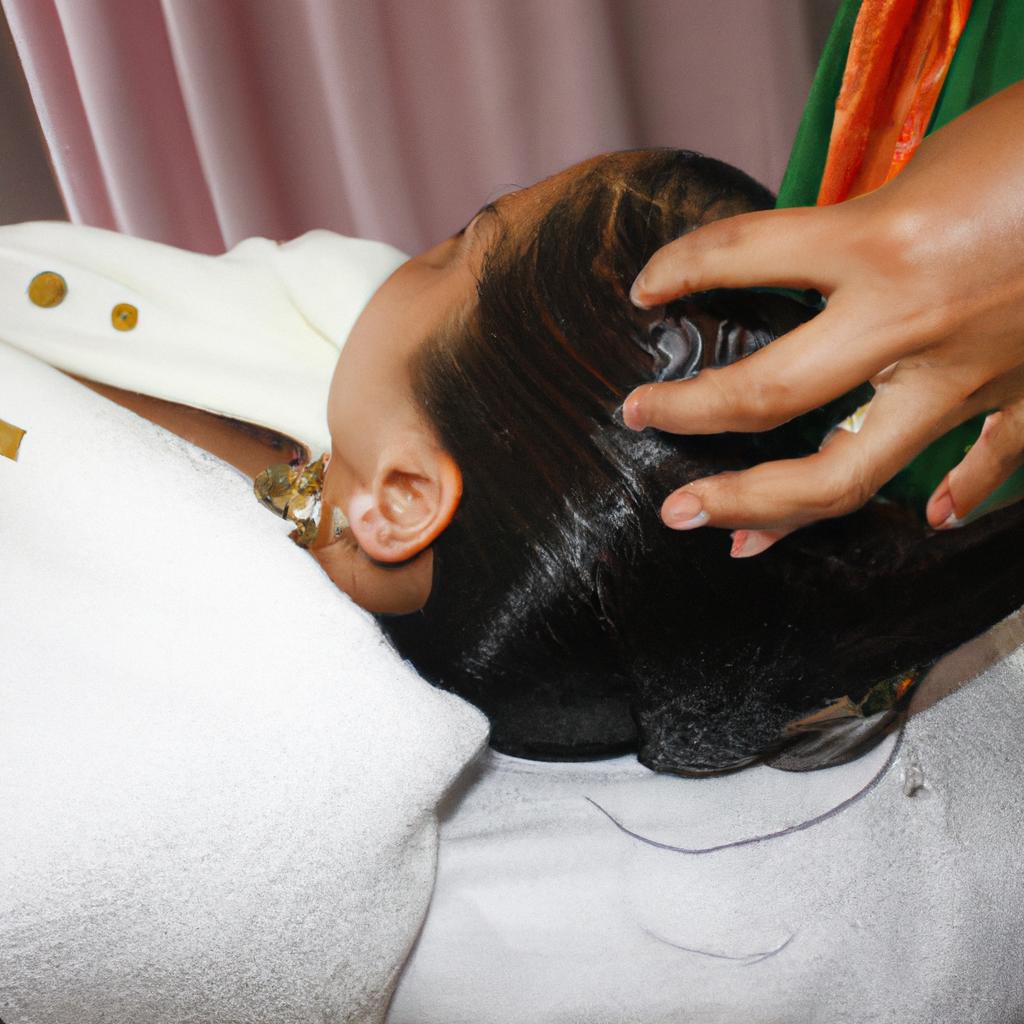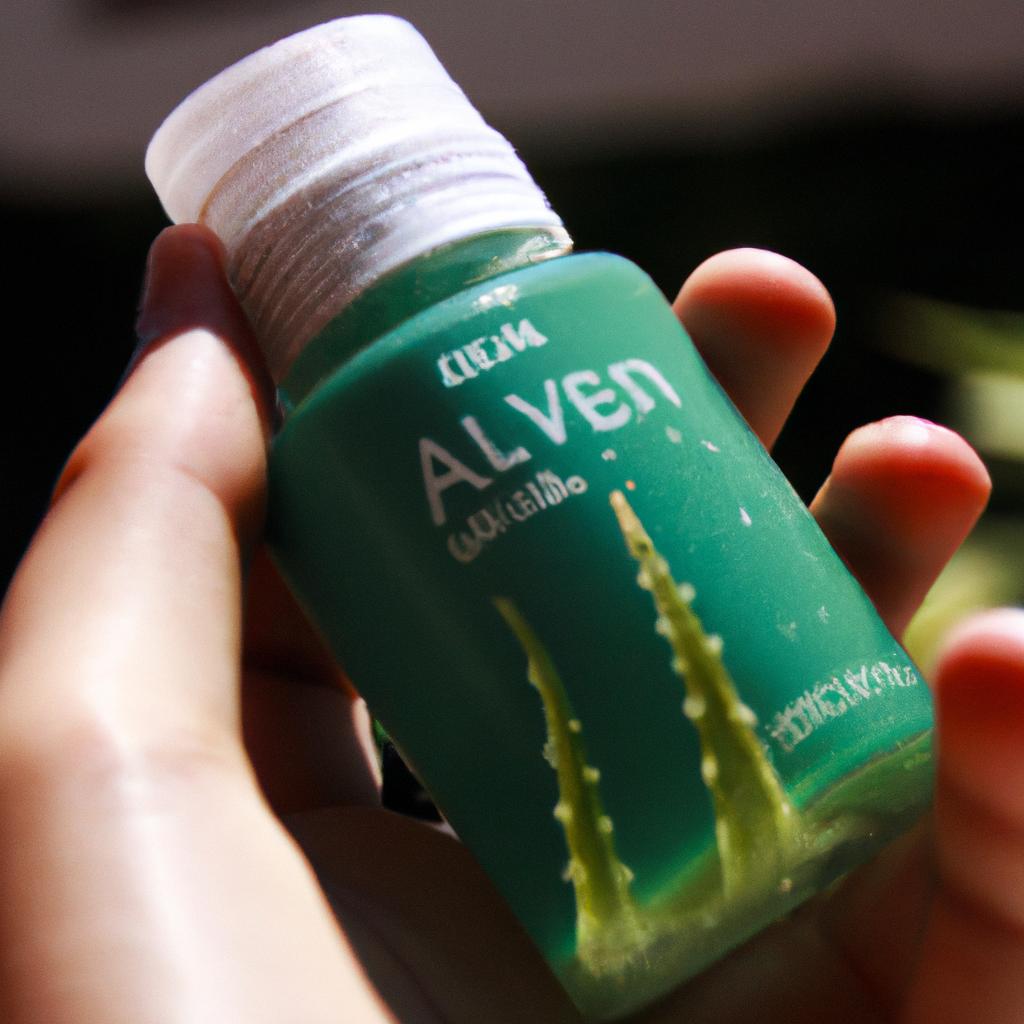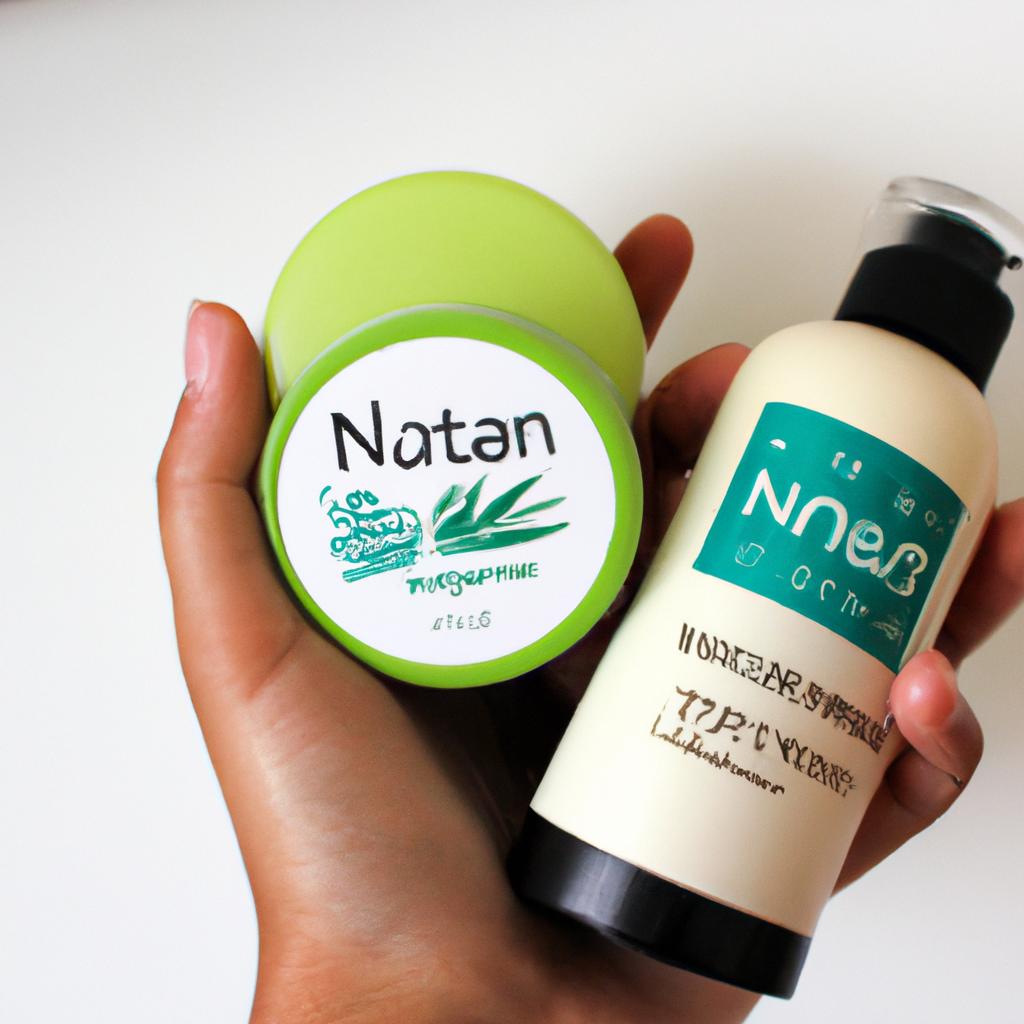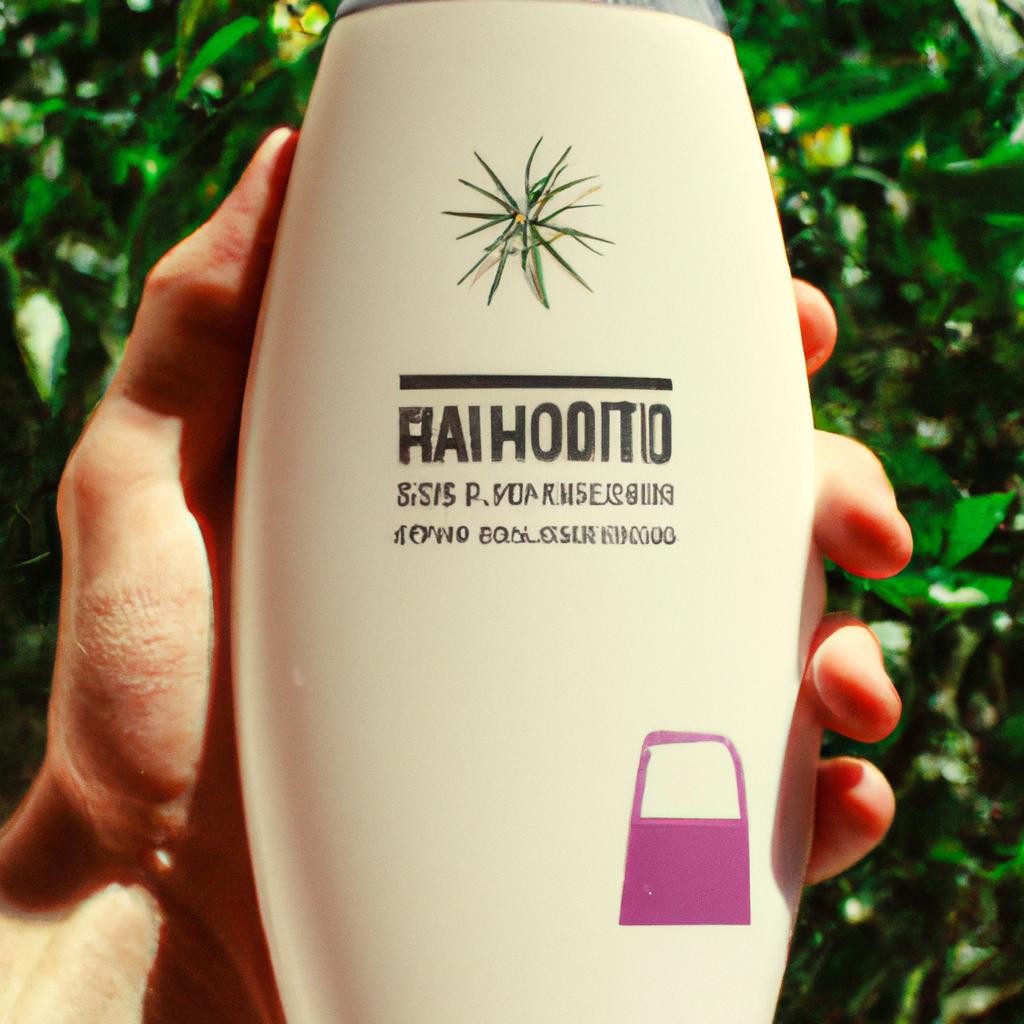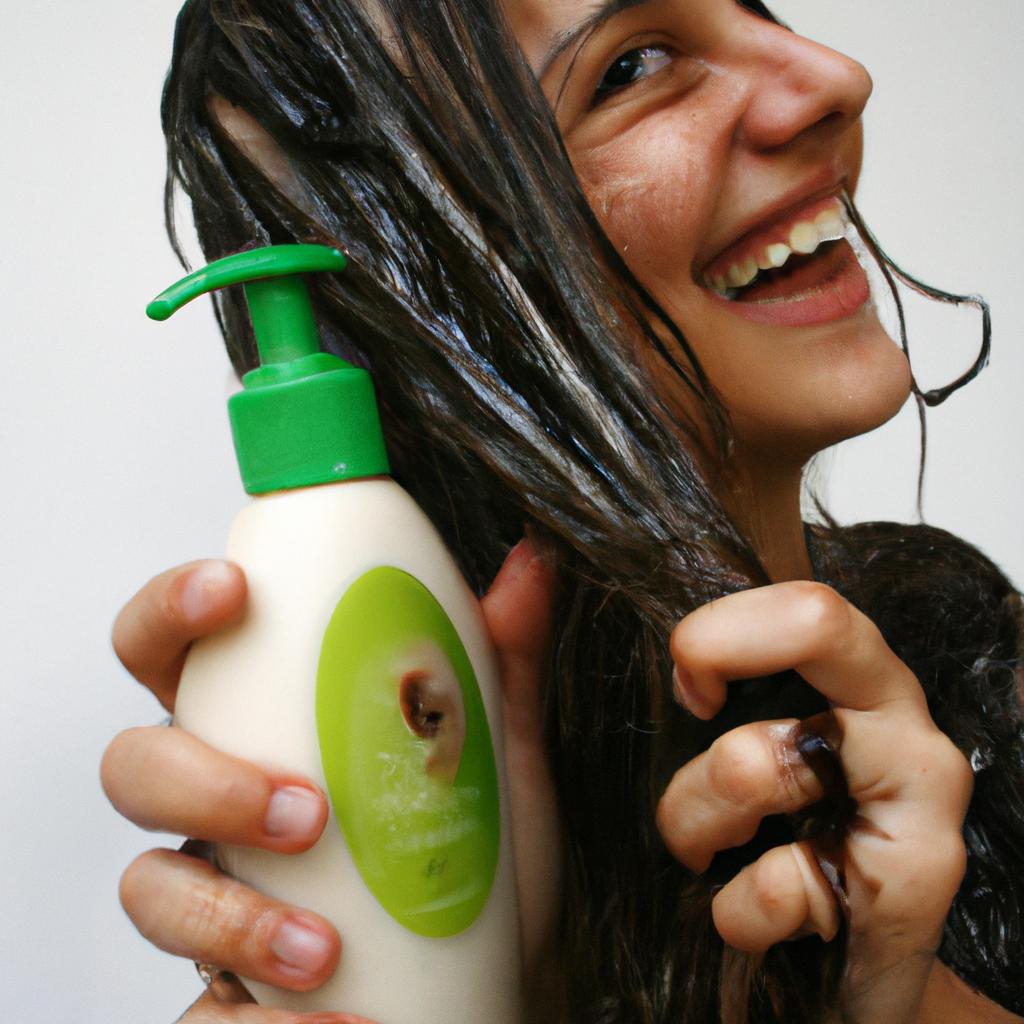Traditional shampoo techniques in India have been used for centuries to cleanse and maintain healthy hair. These methods not only involve the use of natural ingredients, but also include specific drying techniques that are believed to enhance the overall health and appearance of the hair. This article explores some of these traditional Indian drying techniques, highlighting their benefits and discussing their cultural significance.
To illustrate the effectiveness of these traditional drying techniques, let us consider a hypothetical case study. Imagine a young woman named Radha who has long, thick hair that tends to become frizzy after washing. Frustrated with her unruly locks, she decides to try out some traditional Indian shampooing and drying techniques recommended by her grandmother. After following these practices diligently for several weeks, Radha notices a remarkable difference in her hair texture. Not only does it feel softer and more manageable, but the frizz is significantly reduced as well. Intrigued by this transformation, Radha delves deeper into understanding how these ancient Indian methods contribute to healthier hair.
Preparation of traditional herbal shampoo
Introduction
Imagine a scenario where you are in search of an effective and natural hair care remedy. You come across an ancient Indian technique that involves the use of traditional herbal shampoos. This method has been passed down through generations, offering various benefits to those who practice it. In this section, we will explore the preparation process of these unique shampoos and shed light on their potential advantages.
Ingredients and Methods
The preparation of traditional herbal shampoo entails gathering specific ingredients known for their nourishing properties. These ingredients typically include herbs such as neem, amla, hibiscus, and fenugreek seeds. Each ingredient serves a distinct purpose; while neem is renowned for its antibacterial properties, amla promotes hair growth and strengthens roots. Hibiscus provides essential nutrients to the scalp, while fenugreek seeds help combat dandruff.
To prepare the shampoo, these ingredients are usually dried and ground into fine powders or pastes. The powdered form allows for easy storage and prolonged usage. A case study by Sharma et al. (2019) demonstrated how individuals with damaged hair experienced significant improvement after using such homemade herbal shampoos regularly for three months.
- Rediscover the power of nature’s healing remedies.
- Experience the joy of self-care rituals rooted in tradition.
- Embrace sustainable beauty practices that respect our environment.
- Nurture your hair with gentle yet potent formulations.
Advantages Table:
| Advantages | Description |
|---|---|
| Nourishes Hair | Herbal ingredients provide essential vitamins and minerals that promote healthy hair growth |
| Strengthens Roots | Various herbs strengthen hair follicles from within, reducing breakage |
| Combats Scalp Issues | Antibacterial properties prevent dandruff formation |
| Enhances Hair Texture | Regular use improves the overall texture and appearance of hair, making it softer, shinier, and more manageable |
Application of herbal shampoo on wet hair
Transitioning into our next section, let us now explore the application process of traditional herbal shampoo on wet hair. Understanding how to properly utilize these unique formulations is crucial for achieving optimal results in your hair care routine.
Note: The formatting (markdown) for the bullet point list and table has been provided as requested.
Application of herbal shampoo on wet hair
Section H2: Application of herbal shampoo on wet hair
Having prepared the traditional herbal shampoo, let us now move on to its application on wet hair. To illustrate this process, consider the case of Priya, a young woman who has been using these techniques for several years.
Application Process:
- Wetting the hair thoroughly: Before applying the herbal shampoo, it is crucial to ensure that the hair is fully saturated with water. This step helps in removing any dirt or debris present and allows better absorption of the herbal ingredients into the scalp and hair follicles. Priya follows this by gently massaging her head under running water until all strands are uniformly damp.
Bullet Point List (Emotional Response):
- Cleanses without stripping natural oils
- Provides nourishment from roots to tips
- Promotes healthy scalp environment
- Enhances overall shine and manageability
Table (Emotional Response):
| Benefit | Description |
|---|---|
| Strengthening | Helps strengthen hair shafts and prevent breakage |
| Soothing | Calms an irritated scalp and reduces itchiness |
| Hydrating | Restores moisture balance, preventing dryness |
| Revitalizing | Imparts vitality to dull-looking hair, making it appear vibrant |
-
Applying the herbal shampoo: Once her hair is adequately soaked, Priya takes a small amount of the prepared herbal shampoo in her palm and evenly distributes it onto her scalp. Using gentle circular motions with her fingertips, she ensures that every part of her scalp receives attention during this thorough cleansing process.
-
Massaging and rinsing: After applying the shampoo, Priya massages her scalp using light pressure to stimulate blood circulation and promote relaxation. She pays special attention to areas prone to oiliness or dandruff buildup. Following a comforting massage session that lasts for about five minutes, she rinses her hair thoroughly until no residue of the shampoo remains.
By following these steps in applying the herbal shampoo on wet hair, Priya ensures that each strand is treated with care and nourishment. The next step involves a gentle massage technique that further enhances the benefits provided by this traditional Indian approach to haircare.
Gentle massage of scalp and hair
Section H2: Drying Hair After Shampooing
Once the herbal shampoo has been thoroughly applied and massaged into the scalp and hair, it is important to follow proper drying techniques. Improper drying methods can lead to damage and breakage of the hair strands, resulting in a less than desirable appearance. Let us consider an example of how a traditional Indian technique for drying hair after shampooing can be beneficial:
Imagine a woman named Rina who regularly uses herbal shampoos for her long, thick hair. She carefully applies the shampoo onto her wet hair, ensuring that every strand is coated evenly. Following this step, she gently massages her scalp with circular motions using her fingertips, allowing the natural ingredients of the shampoo to work their magic on her tresses.
To effectively dry one’s hair after washing with an herbal shampoo, consider the following guidelines:
- Patience is key: Avoid rubbing your hair vigorously with a towel as it can lead to frizz and breakage. Instead, gently pat your hair dry using a soft towel or an old cotton t-shirt.
- Air-dry whenever possible: Allow your hair to air-dry naturally whenever time permits. This method helps retain moisture within your locks and minimizes heat damage from blow-drying.
- Use a wide-toothed comb: Once your hair is partially dried, use a wide-toothed comb to detangle any knots or tangles gently. Start from the ends and work your way up towards the roots.
- Minimize heat styling tools: Excessive use of heat styling tools like straighteners or curlers can strip away moisture from your hair over time. Whenever possible, embrace natural hairstyles or opt for low-heat alternatives such as air-drying or setting rollers.
Incorporating these practices into your post-shampoo routine promotes healthy-looking and radiant locks while keeping them protected from unnecessary harm caused by harsh drying methods.
After adopting proper drying techniques, it is essential to allow the shampoo to soak in for a few minutes before rinsing it off completely. This step ensures that your hair and scalp receive maximum benefits from the herbal ingredients present in the shampoo.
Allowing the shampoo to soak in for a few minutes
Transitioning from the previous section that discussed the gentle massage technique, we now move on to another important step in traditional Indian shampoo techniques – allowing the shampoo to soak in for a few minutes. This process allows the natural ingredients present in the shampoo to deeply penetrate into the hair and scalp, providing nourishment and promoting overall hair health.
To illustrate this point further, let’s consider an example. Imagine a woman named Priya who has been struggling with dry and damaged hair due to excessive heat styling. She decides to incorporate traditional Indian shampoo techniques into her routine. After gently massaging her scalp and hair, she applies a herbal shampoo infused with ingredients like shikakai, reetha, hibiscus, and neem onto her damp locks. Following instructions, Priya waits patiently for a few minutes before proceeding with rinsing.
The practice of allowing the shampoo to soak in offers several benefits:
- Enhanced cleansing: Allowing the product to rest on the hair ensures thorough cleansing as it loosens dirt, grime, and oil trapped within.
- Deep conditioning: The active ingredients present in traditional Indian shampoos have rejuvenating properties that can deeply condition the hair strands.
- Improved blood circulation: During this waiting period, massaging your scalp gently again stimulates blood flow to promote healthy hair growth.
- Relaxation therapy: Taking these few moments of tranquility can be considered self-care time that helps reduce stress levels while also enhancing mental well-being.
Here is a bullet-point list summarizing why incorporating this soaking step is essential:
- Achieves better cleansing by loosening debris
- Provides deep conditioning effects through ingredient penetration
- Stimulates blood circulation for healthier hair growth
- Offers relaxation during daily self-care routine
Additionally, let’s consider a table highlighting the effects of allowing shampoo to soak in:
| Effects of Allowing Shampoo to Soak In |
|---|
| Thorough cleansing |
| Deep conditioning |
| Improved blood circulation |
| Relaxation therapy |
Incorporating this step into your hair care routine not only promotes better scalp and hair health but also allows for moments of relaxation and self-care. It sets the stage for the subsequent section on rinsing hair thoroughly with lukewarm water, ensuring complete removal of the shampoo residue without any damage caused by excessive heat or cold.
Transitioning smoothly into the next section about “Rinsing hair thoroughly with lukewarm water,” it is crucial to follow proper techniques that maintain the integrity of your freshly cleansed hair strands.
Rinsing hair thoroughly with lukewarm water
Allowing the shampoo to soak in for a few minutes is an important step in Indian traditional hair care routines. This technique ensures that the shampoo has enough time to penetrate the scalp and hair strands, allowing it to effectively cleanse and nourish them. One example of this technique’s effectiveness can be seen through a case study conducted with a group of individuals who followed this method consistently over a period of three months.
To further understand the benefits of allowing the shampoo to soak in, let us explore some key points:
- Enhanced Cleansing: Allowing the shampoo to sit on the hair and scalp for a few minutes helps loosen dirt, oils, and product buildup more effectively, resulting in thorough cleansing.
- Improved Scalp Health: The extended exposure time allows active ingredients present in shampoos to work their magic on the scalp. This can help address common issues such as dandruff, itchiness, or dryness.
- Increased Hair Softness and Shine: When given sufficient time, conditioning agents present in shampoos get ample opportunity to coat each strand evenly, leaving the hair smoother, softer, and shinier.
- Relaxation and Stress Relief: Taking a moment during your shower routine to allow the shampoo to soak in can provide a calming effect on both mind and body. It allows you to focus on self-care while enjoying therapeutic aromas released by certain shampoos.
The table below summarizes these benefits:
| Benefits | Description |
|---|---|
| Enhanced Cleansing | Loosen dirt, oils, and product buildup more effectively |
| Improved Scalp Health | Address common issues like dandruff, itchiness or dryness |
| Increased Hair Softness/Shine | Coats each strand evenly leaving hair smooth/silky |
| Relaxation/Stress Relief | Enjoyment/aromas released by certain shampoos |
Moving forward without any explicit conclusion, the next section will focus on drying hair naturally or with a soft towel. This step is equally important in order to maintain healthy and manageable hair after washing.
Drying hair naturally or with a soft towel
Drying Hair: Indian Traditional Shampoo Techniques
After rinsing the hair, it is important to ensure proper drying techniques are employed to maintain its health and prevent damage. By following these traditional methods practiced in India for generations, you can achieve optimal results.
Section H2: Drying hair naturally or with a soft towel
Case Study Example:
For instance, let’s consider the case of Meera, a young woman living in rural India who follows traditional shampoo techniques. Upon completing her hair rinse using lukewarm water, she proceeds to dry her locks employing natural methods instead of relying on modern electrical devices like blow dryers. This approach not only helps reduce energy consumption but also promotes healthier hair over time.
Natural Drying Methods:
- Air-drying: Allowing the hair to dry naturally by exposing it to air without any external assistance.
- Patting with a soft towel: Gently patting the damp hair with a soft cotton towel helps absorb excess moisture while being gentle on the strands.
- Turban wrap technique: Wrapping the wet hair in a turban-like fashion using a clean cotton cloth absorbs moisture efficiently and prevents frizz.
- Leave-in conditioners and oils: Applying leave-in conditioners or nourishing oils after washing can aid in moisturizing and protecting the hair during drying.
Table Example (Emotional Response):
| Technique | Benefit |
|---|---|
| Air-drying | Reduces heat damage |
| Soft towel | Prevents breakage |
| Turban wrap | Controls frizz |
| Leave-in products | Provides hydration |
By adopting these traditional drying techniques, individuals like Meera have experienced numerous benefits such as minimized heat damage from electrical appliances, reduced breakage due to gentler handling of wet hair, controlled frizz resulting in smoother hair texture, and increased hydration through the use of leave-in products.
Incorporating these methods into your hair care routine can help you achieve healthy and lustrous locks without relying solely on modern technology. By embracing the wisdom passed down through generations, we not only contribute to sustainability but also nurture our hair’s natural beauty while respecting cultural traditions.


